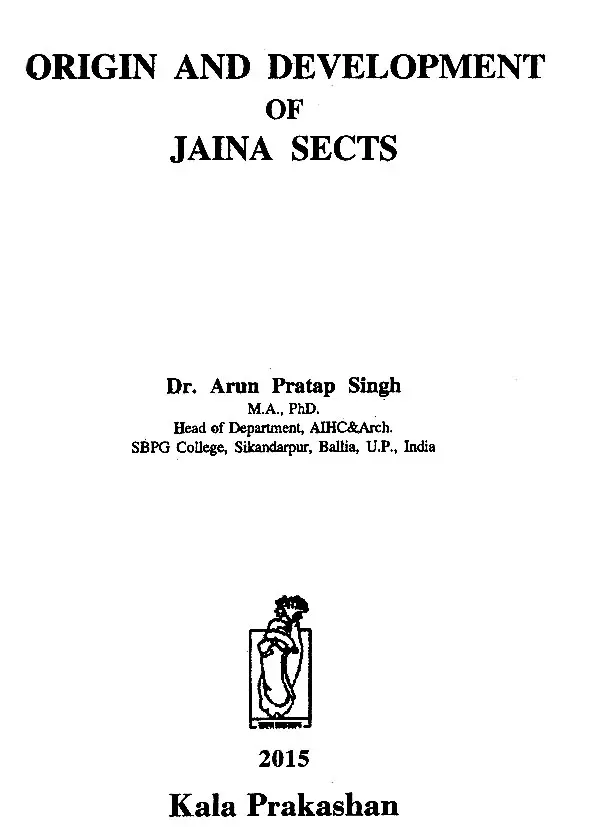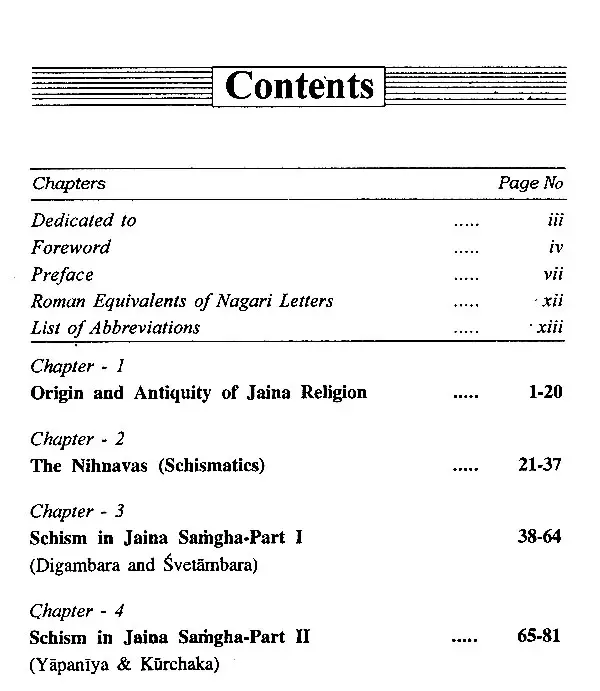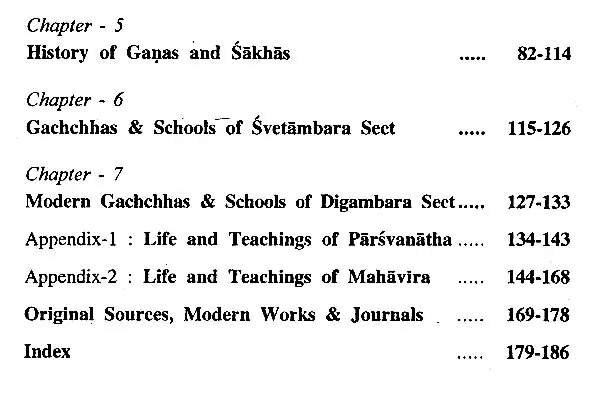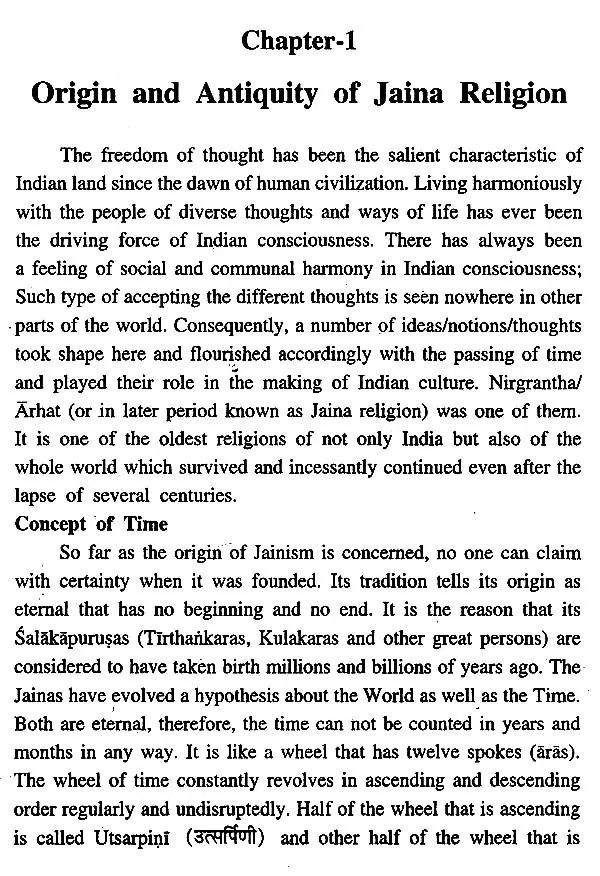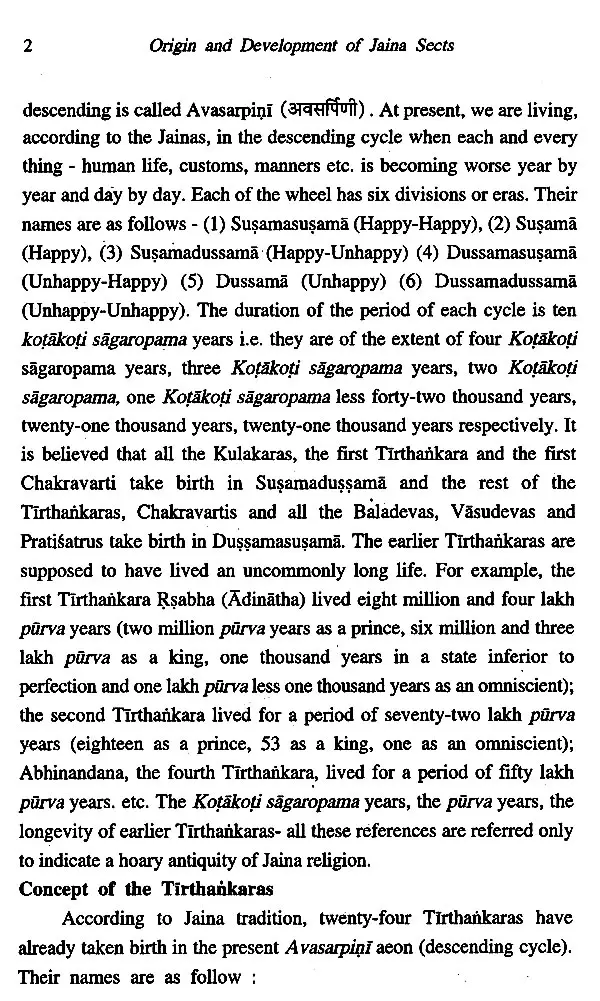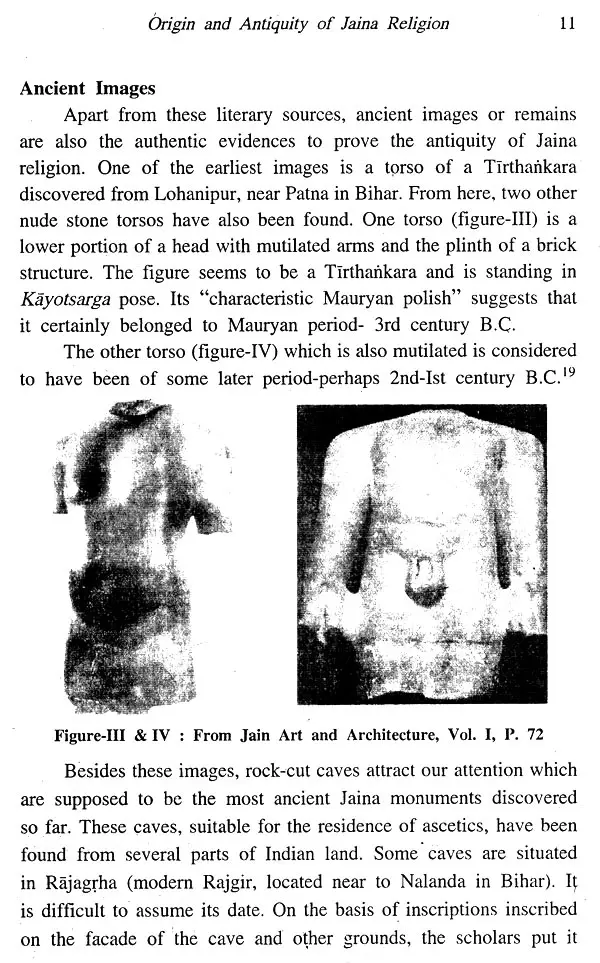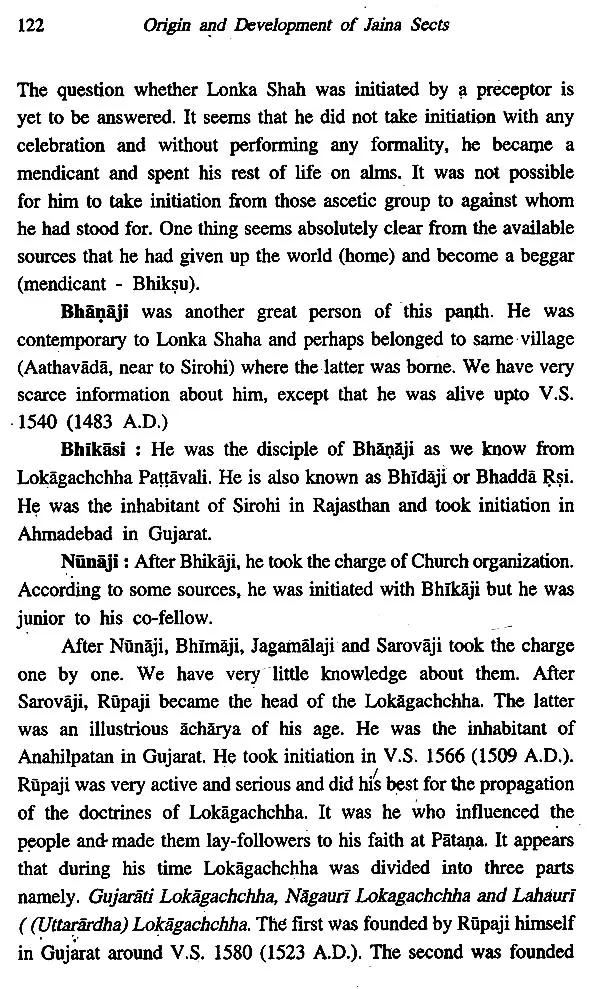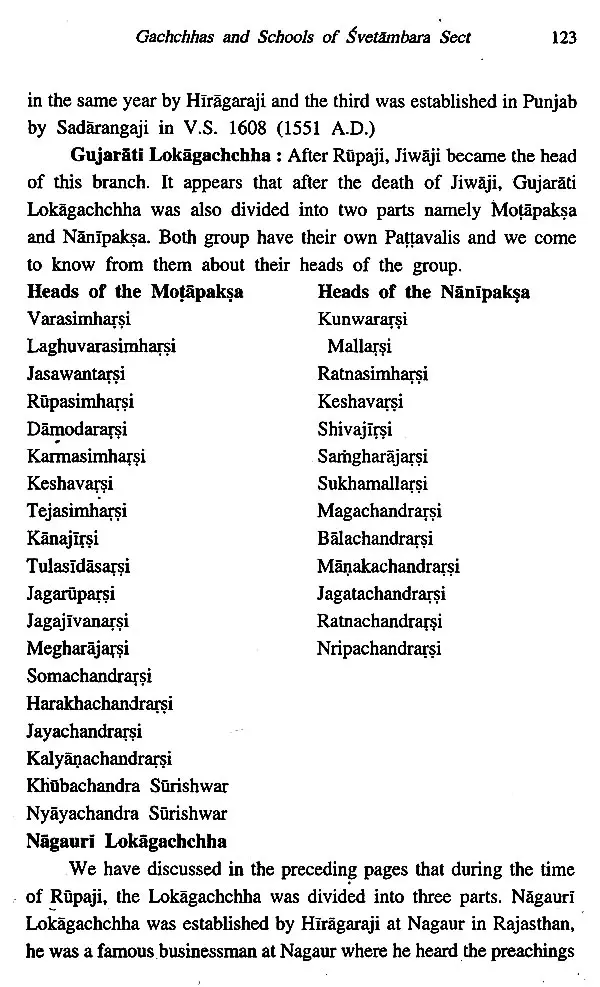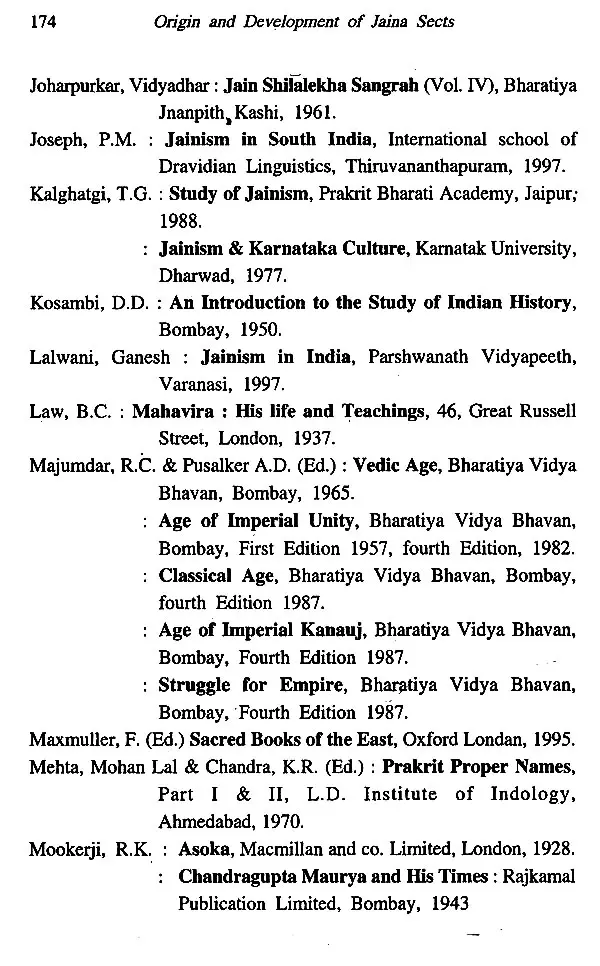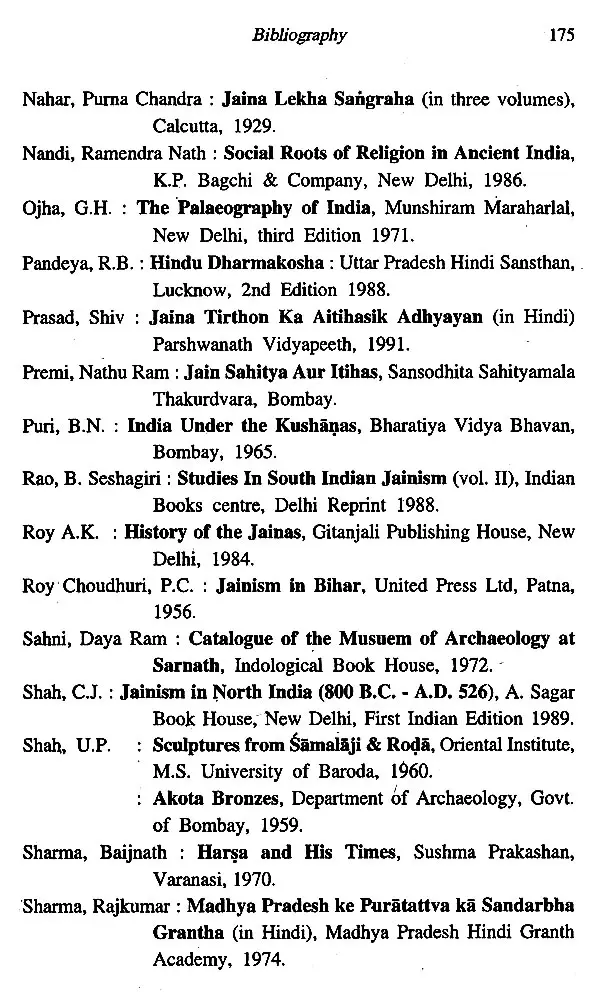
Origin and Development of Jaina Sects
Book Specification
| Item Code: | UAF138 |
| Author: | Arun Pratap Singh |
| Publisher: | KALA PRAKASHAN |
| Language: | English |
| Edition: | 2015 |
| ISBN: | 9789385309465 |
| Pages: | 200 (Throughout B/W Illustrations) |
| Cover: | HARDCOVER |
| Other Details | 9.00 X 6.00 inch |
| Weight | 360 gm |
Book Description
The book discusses in detail the development of Jaina sects in space and time. It is divided into seven chapters and two appendixes. The main theme of the book is to show the origin and antiquity of Jaina religion and to analyse the causes of the separation of united Jaina Church. From all available sources-literature, inscriptions, excavated materials-it has been proved that the antiquity of Jaina religion goes as back as to the dawn of Indian civilization. It was contemporary to Vedic (modern Hindu) religion and predecessor to the religion of Shakya Muni. It throws fresh light on the dissensions within the church organization which ultimately led to the emergence of several sects and sub-sects.
(The book by Dr. Singh for the first time presents a holistic, analytical, comparative and most updated study of origin and development of Jaina sects. ... He has culled the relevant data from literary, inscriptional and also what is reflected in visual expressions of Jaina art to make the book authentic within the framework of historical study. It is satisfying to find that in his interpretations and analyses, he is free from sectarian or personal bias. The book undoubtedly will be useful alike to the researchers and students. ...The author has supported whatever he has discussed and propounded on the basis of evidences not in isolation but in totality. Therefore, the conclusions drawn in the book are valid and acceptable.)
I feel happy to write foreword of the book entitled origin and Development of laths Sects authored by Dr. Arun Pratap Singh, Associate Professor, Ancient History, Culture and Archaeology, S.B.P.G. College, Sikandarpur, Bahia, U.P. who is well-known for his scholarly writings on different aspects of Jainism. The scholars such as C.J. Shah, G. Bobber, J. Burgess, Hinds' Jain, M. Winternitz etc. have contributed immensely in the field of Jainism, in reference to its landmarks, basic tenets, historical evolution and to some extent also about different sects of Jainism. The book by Dr. Singh for' the first time presents a holistic, analytical, comparative and most updated study of origin and development of Salon sects. I have noted that Dr. A.P. Singh has taken this challenging task on the basis of his long experience of research in Jainism and as a consequence developing deep insight into the subject. As I know he has been pursuing research on Jainism for well-over past Misty years. He has culled the relevant data from literary, inscriptional and also what is reflected in visual expression of Jain art to make the book authentic within the framework of historical study. It is satisfying to find that in his interpretations and analyses, he is free from sectarian or personal bias. The book undoubtedly will be useful alike to the researchers and students.
The book is divided into seven chapters namely- Origin and Antiquity of Jaina Religion, Nihnavas (Schismatics), Schism in Jaina Samgha (Digambara and Svetambara) Part-I, Schism in Jaina Samgha (Yapaniya and Kurchaka) Part-II, History of Ganas and & Sakhas, Gachchhas and Schools of Svetambara Sect Modem Gachchhas and Schools of Digambara Sects- with two appendixes on lives and teachings of Parsvanatha and Mahavira and an exhaustive bibliography.
While dealing with the origin and antiquity of Jainism, he has taken note of the Indus Valley seals and sealings and Harappan torsos to suggest the prevalence of the practice of rigorous austerity and the posture having semblance with subsequent Kayotsarga posture to be shown exclusively with the Jinas (Tirtharnkaras). But as a student of history, he has rightly observed that the historical beginning of Jainism has to be accepted from the time of 23rd Jina Parsvanatha, in about 8th century B.C., who is taken to be real founder of Jainism by propounding the basic tenets of practical observance in the form of Chaturyama-Dharma namely, Satya (Truth), Ahimsa (Non-violence). Asteya (Non-stealing) and Aparigraha (Non-acquisition). Mahavira, the senior contemporary of Buddha, has added Brahmacharya (Celibacy) in 6th century B.C. The prevalence of material-timed worldly life (Pravritti) and non-worldly ascetic life (Nirvritti) ultimately led to the origin of sramanic or ascetic religions such as Jainism and Buddhism.
From time immemorial there have been two streams of thought flowing simultaneously in India-one world-oriented (pravrtti ) and other renunciation-oriented (nivrtti ). In course of time, the former stream of thought was known as Vedic or Brahmanic tradition (popularly famous as Hindu religion) and the latter as Shramanic tradition (Jainism, Buddhism, Ajivika and some other sects). We find its first written reference in the Rock-Edicts of emperor Ashok belonging to third century B.C. These are referred to there as mahanasamana. These two streams of thought continued to flow for uncountable centuries without facing any obstacles. They behaved like the barter system-giving and taking to each other-and consequently influencing themselves. What we know today as Indian culture is nothing but an auspicious amalgamation of these two streams of thought. Both traditions seek their antiquity in remote past. This antiquity goes as back as to Harappan civilization or early Vedic period-nay, even before this period, perhaps in the Neolithic age when Indian inhabitants began to think about the existence of human life. So far as Jainism is concerned, being the integral part of Shramanic tradition, it regards itself as one of the most ancient religions of the world. Out of twenty-four Tirthankaras, the historicity of Parsvanatha and Mahavira, the 23rd and 24th Tirthankaras respectively, is beyond doubt. With the arrival of Mahavira, Jainism began to spread in an organized way and it was His super management that within a short span of life it influenced almost all parts of India and continued to remain till today at the dawn of second millennium uninterruptedly.
It should be known here that historically speaking today's current term Jaina Dharma is not very old. It has been in currency only since the 6th or 7th century A.D. Earlier the term used for Jaina Dharma was Nirgrantha or Arhat Dharma. Even in these two the term Nhgrantha is mainly used to denote the traditions of 23rd and the 24th Tirthankaras-Parsava and Mahavira. But as far as the term Arhat is concerned, it has been used in a broader sense. All the branches of Shramana tradition such as him, Buddhists, Ajivika have been its followers. But with the passage of time, some of the sub-classes of Shramna tradition got absorbed in the broader Hindu religion and streams like Ajivika and others got lost, while the Buddhist tradition remained only in name in India. The denotation of the term Arhat that got restricted to Joins tradition. Henceforth, Mina Dharma is called Arhat Dharma, Shramana Dharma or Niragratha Dharma. But we should keep in mind that terms like Arhat and Shramana etc. have also denoted other streams of Nivrtti Marga while terms like Nirgrantha and Jnataputriya (related to Lord Mahavira as He belonged to Jnatri clan) have denoted to Jaina Shramana only.
